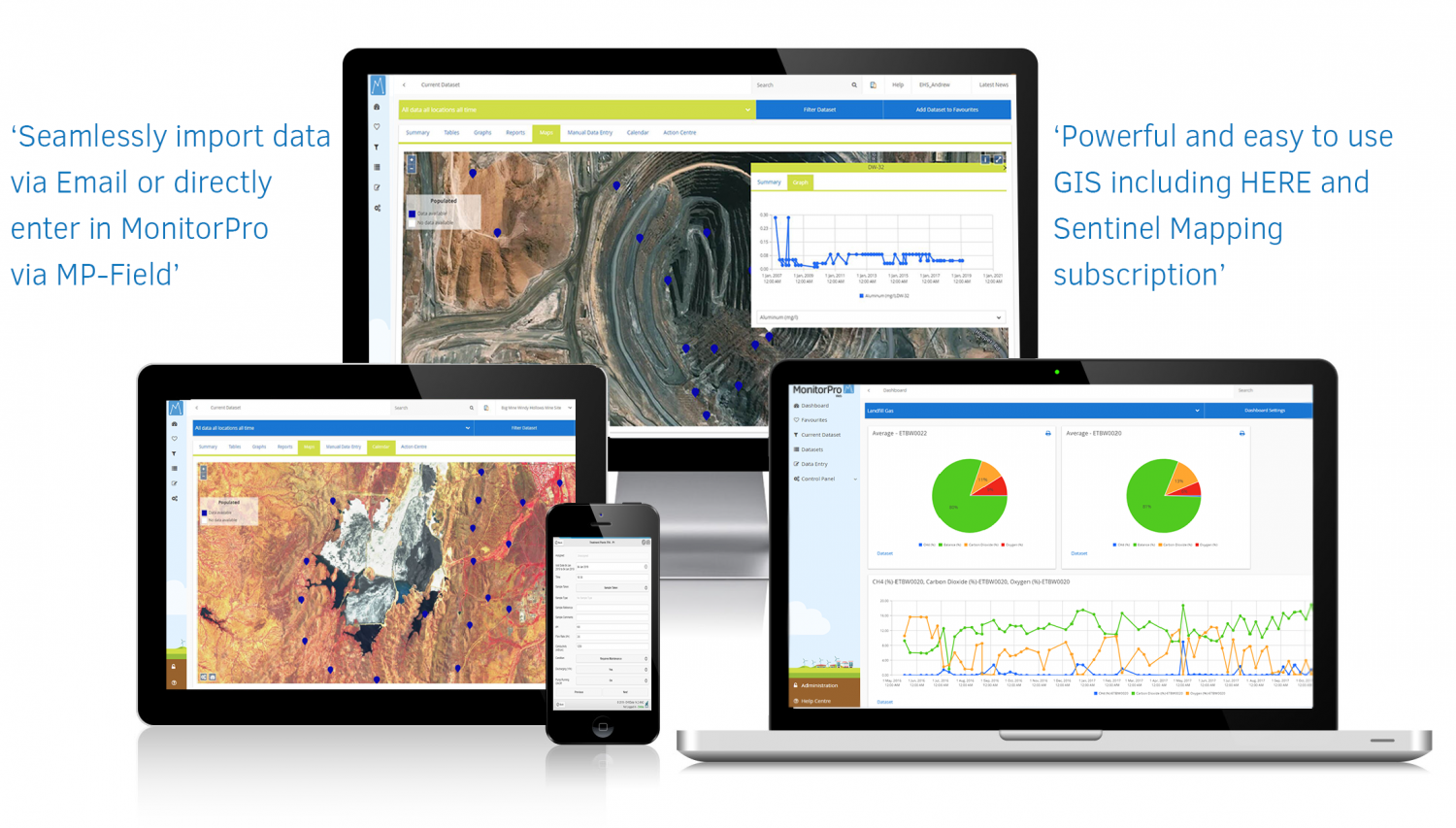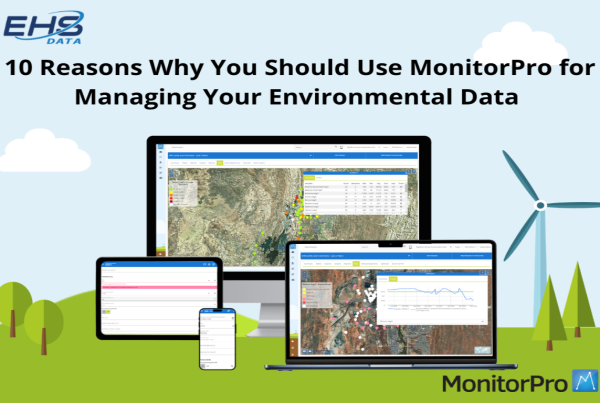10 Reasons Not to Use Spreadsheets for Environmental Data Management
Spreadsheets are used worldwide for a wide variety of purposes and they are exceptionally flexible and very powerful, however, they were never designed to be a workflow system or a database.
Working with spreadsheets can cause huge problems for environment departments if used to manage the requirements of environmental permits. It is the same scenario as financial departments using accountancy software or manufacturing and distribution organisation’s using a dedicated enterprise resource planning (ERP) system.
Environmental data management systems are designed to hold environmental data together in one, centralised place. This key environmental data can include air, surface water, groundwater, noise, dust, and weather, which are accessible by several users simultaneously from multiple devices in any location. This smart approach benefits the overall data consistency, as the collation of data sets is automated for final analysis and reporting. It also drastically reduces the risk of data and human input errors.
Auditors also prefer to work with a commercially accepted software, especially if it is quality certified by a regulator, for example, the England Environment Agency’s MCERTS scheme. There is no certification available for spreadsheets.
The team here at EHS Data has put together this comprehensive list of 10 reasons why environmental reporting should move away from spreadsheets to a dedicated environmental data management system.
1 - Environmental Permits
The obligations and conditions set out in permits determine the environmental department’s monitoring requirements. They detail the actions to be achieved and when to be recorded to form the basis for the management plan. Conditions should be linked to every part of the management, something which spreadsheets are incapable of.
2 - Validation
Spreadsheets have little, or no validation. An environmental data management system is designed to automate the entire process of harvesting data from emails, loggers, folders, and many other places and to automatically calculate and validate against the requirements of your permit, alerting immediately where a potential problem or even a breach occurs so that action can be taken. Manually doing this in a spreadsheet is very time consuming and unreliable.
3 - Scalability
An environmental data management system is designed to scale with the organisation’s specific requirements and has powerful querying and filtering tools to access data very quickly. Spreadsheets become tangled with large data inputs and require complex functionality, compounding the data problem. Spreadsheets and formulas are only as accurate as the person doing the entries. It is easy to lock major mistakes in place and very difficult to discover them.
4 - Planning
Creating and maintaining a monitoring plan in accordance with the requirements of the environmental permit is highly complex. Planning, managing and tracking sampling locations using spreadsheets can be tedious and extremely time consuming. This important task is an automated process using an environmental data management system and drastically saves time and increases efficiency.
5 - Security
While password and other protections can be added onto spreadsheets, there is usually no role-based access to certain functions or specific data sets. There are no histories of data edits (audit trails) on spreadsheets. Mistakes (or even deliberate edits) can often not be seen or tracked. Environmental data management systems are allocated per user.
6 - Uniformity
Uniform naming conventions are often unenforced in spreadsheets, leading to inconsistency and a lot of work collating multiple sheets or workbooks together. It’s easy to download from your EDMS software to a spreadsheet, but going in the other direction usually takes a lot of matching up of fields, which introduces more opportunities for errors.
7 - Visualisation
Spreadsheets are able to formulise environmental data into tables and graphs, however, using a dedicated environmental data system gives you a more compelling and interactive graphical interface. A richer interpretation such as dashboards or maps provides a more professional visual of your data, even providing dynamic reading and mapping using the very latest satellite imagery.
8 - Automated Reporting
It is critical to have professional reports to maintain your key performance indicators (KPIs). Environmental data management systems come with built-in report functionality, with the ability to have custom regulatory and other reports plugged in. Creating these reports, yourself would be time-consuming, tedious, and monotonous. Spreadsheets are not able to format reports or automate them.
9 - Standardisation
You may have to work with an external consultant. Many environment consultants prefer to use an environmental data management package. New employees will often have experience using an environmental system that they will be able to automatically use. Spreadsheets can hinder both your team and consultants in terms of time and cost.
10 - Support
Commercial environmental data management systems have full support teams behind them and can help with day-to-day support, training, customisation, and development, with regular progress. They can even take on the entire management of systems, e.g. to cover maternity or sick leave. Spreadsheets have none of this. Environmental data management systems are populated and customised to your requirements by a professional implementation consultant.
So whilst we acknowledge spreadsheets and their accomplishments, it is possible that your loyalty to spreadsheets may hurt the chances of future success in managing your environmental data.

About MonitoPro
The complete, professional environmental data monitoring solution, MonitorPro is the IT solution trusted by environmental teams worldwide to manage their environmental compliance and data collection. MonitorPro is a web-based or locally hosted solution for the collation of ALL sources of environmental data, where it is generated by loggers, laboratories, weather stations, calculations, or other data repositories. MonitorPro is the first EHS Software solution to receive an MCERTS accreditation from the Environmental Agency.
About EHS Data
EHS Data is a world leading UK based software company providing Environmental Data Management Solutions to over 1,000 sites in 40 countries worldwide. For over 20 years, our versatile software solution, MonitorPro, has helped organisations save time, improve planning, quality control, site analysis and reporting to manage environmental obligations and sustainability.
ISO 27001
EHS Data is ISO 27001 certified.
A Carbon Negative Business
In 2020, EHS Data attained Carbon negative status and is committed to maintaining this status each year.





